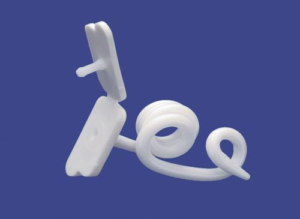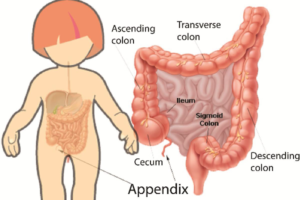- Anorectal disorders including encopresis and Intractable constipation in collaboration with gastroenterologist, dietician, psychologist and Continence physiotherapist.
- Real time ultrasound, anorexia muscle complex assessment and Anorectal manometry.
- Paediatric Gastrointestinal surgery including Hirschsprung’s disease.
- Specialised Paediatric Gastrointestinal Clinic for constipation, Hirscspring’s disease and anorectal disorders
- Antegrade Continent Enemas
- Antegrade colonic enema surgery (ACE) or Malone antegrade colonic enema (MACE) is a procedure that is designed to help empty the bowel of feces. The procedure allows the emptying of the bowel by using fluid (similar to an enema) that is inserted into a small opening in the side of the abdomen rather than into the rectum.


- The reasons for the surgery include problems such as constipationand fecal incontinence. These problems may be caused by many conditions. They may be congenital (present at birth) abnormalities that affect the rectum and anus, or they can be caused by neuropathies (nerve supply problems) that result from spinal abnormalities.
- ACE surgery is with performed with key hole when other methods to control constipation or fecal incontinence have not been successful. These other methods might include bowel training, dietary changes, medications taken rectally (suppositories or enemas), or medications taken by mouth.
- Most people use their ACE once daily, but a few need to use it only every other day. An irrigation may take 30-60 minutes. It is important to stick to a routine and empty your bowels at approximately the same time every day. Approximately 30 minutes after a meal is a good time to empty the bowels, as the colon has increased activity and good clearance of bowels is more likely.
Hirschsprung’s disease(HDs)
Hirschsprung’s disease is a condition that affects the large intestine (colon) and causes problems with passing stool. The condition is present at birth (congenital) as a result of missing nerve cells in the muscles of the baby’s colon.
A newborn who has Hirschsprung’s disease usually can’t have a bowel movement in the days after birth. In mild cases, the condition might not be detected until later in childhood. HDs is diagnosed by rectal biopsy
Surgery to bypass or remove the diseased part of the colon is the treatment
Recent trends in surgery for Hirschsprung’s disease ( absence of ganglion cells in bowel) have been toward earlier repair and fewer surgical stages. A one-stage pull-through for Hirschsprung’s disease avoids the additional anesthesia, surgery, and complications of a colostomy. A laparoscopic-assisted approach diminishes surgical trauma to the peritoneal cavity.
The technique uses three incisions on the abdomen. The transition zone ( between healthy and diseased bowel) is initially identified by seromuscular biopsies obtained laparoscopically.
Anorectal Malformations
Anorectal malformations are birth defects, or problems that happen as an unborn baby is developing during pregnancy. With this defect, the anus and rectum don’t develop properly. They are the lower part of the digestive tract.
- Ano means the anus. This is the opening at the end of the large intestine. Stool passes through here when there is a bowel movement.
- Rectal means the rectum. This is the part of the large intestine just above the anus.
Normally during a bowel movement, stool passes from the large intestine to the rectum and then to the anus. Muscles in the anal area help to control when you have a bowel movement. Nerves in the area help the muscles sense the need for a bowel movement. The nerves also stimulate muscle activity.
With an anorectal malformation, several problems can occur. These include:
- The anal passage may be narrow
- The anal opening may be covered with a tissue or membrane
- The rectum may not connect to the anus
- The rectum may connect to part of the urinary tract or the reproductive system. This happens through a passage called a fistula.
Anorectal malformations cause problems with how a child has a bowel movement. Treatment depends on which type of problem your baby has.
Anorectal malformation may be seen with some genetic syndromes or congenital problems that are present at birth. These include:
- VACTERL association. This disorder includes problems with the spine, anus, heart, trachea, esophagus, kidneys, and arms and legs.
- Digestive system problems
- Urinary tract problems
- Spinal problems
- Down syndrome
While low-type imperforate anus in most cases, low-typed malformation could be corrected by one-staged anoplasty but a temporary defunctioning colostomy usually required in intermediate or high-type malformation before the definitive repair. The difinative surgery can be performed with key hole surgery ( laparoscopic assisted rectal pull through (LARP)) Apart from being minimally invasive, LARP also possesses an advantage in the management of high-type malformation such recto-vesical fistula that would require laparotomy. The magnification property of laparoscopy also allows the accurate placement of the pull-through rectum.


